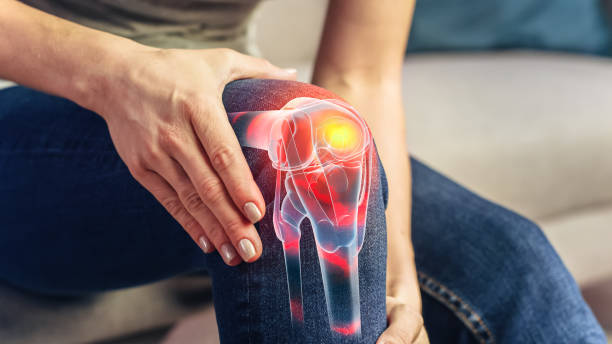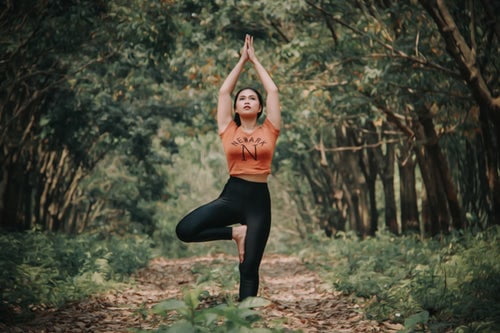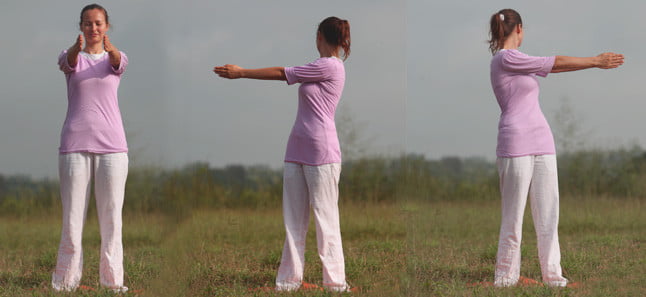Knee pain is a common issue for many, whether caused by arthritis, injury, or prolonged wear and tear. For beginners, gentle yoga can be an effective and supportive way to manage knee discomfort, improve flexibility, and strengthen the muscles around the knee. Yoga, when practiced mindfully, offers a low-impact way to relieve pain, improve mobility, and provide mental relaxation. Below are some beginner-friendly yoga poses designed specifically for knee pain relief. So, see below gentle yoga for knee pain beginners.
Table of Contents
Gentle Yoga for Knee Pain Beginners:
Yoga for knee pain focuses on strengthening the muscles around the knee joint, improving flexibility, and promoting alignment. It’s important to approach these poses with mindfulness, moving slowly and with control, avoiding any jerky or deep movements that could aggravate the knees. Yoga can also enhance circulation, reduce stress, and help release tension that might be contributing to discomfort. Below are gentle yoga poses that help beginners address knee pain. So, see below gentle yoga for knee pain beginners.
1. Supta Baddha Konasana or Reclining Bound Angle Pose:
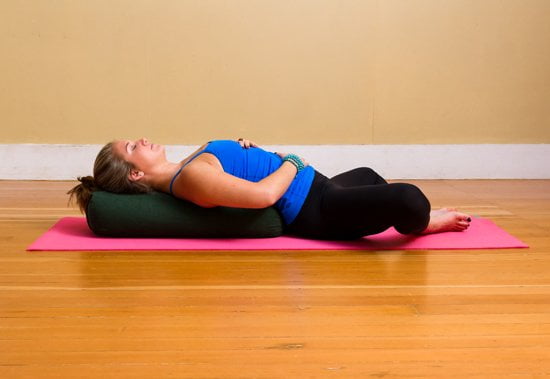
This gentle pose opens the hips, stretches the inner thighs, and helps improve knee mobility without putting pressure on the knees. It’s a great way to release tension in the lower body and promote relaxation while supporting knee health.
How To Do It:
- Begin by lying flat on your back with your legs extended and arms by your sides.
- Bring your feet together, allowing your knees to fall out to the sides. Keep your feet as close to your pelvis as possible.
- Place your hands on your abdomen or by your sides, keeping your shoulders relaxed.
- Breathe deeply, holding this pose for 1–3 minutes. You should feel a gentle stretch in your inner thighs and hips, but not discomfort in the knees.
2. Tadasana or Mountain Pose:
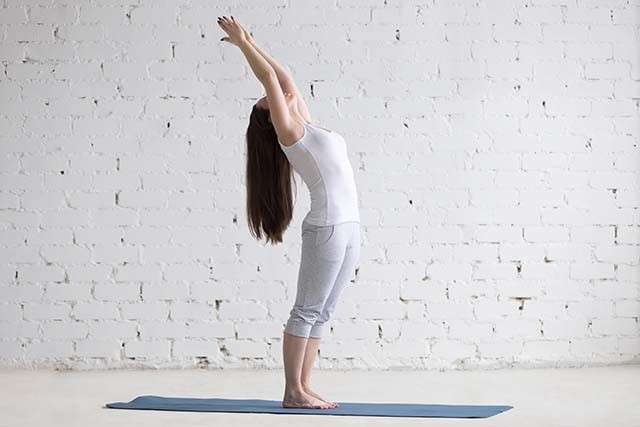
Tadasana is a foundational standing pose that strengthens the legs and promotes proper posture. By engaging the thighs and lengthening the spine, this pose improves knee stability and encourages alignment, which is essential for preventing knee discomfort and promoting overall knee health.
How To Do It:
- Stand tall with your feet hip-width apart, arms by your sides.
- Engage your thighs, lifting your kneecaps slightly, and ground down through your feet, spreading your toes wide.
- Stand tall by lengthening your spine and imagining a straight line from your head down through your feet.
- Hold this pose for 30 seconds to 1 minute, focusing on even weight distribution between both feet.
3. Chair Pose or Utkatasana:
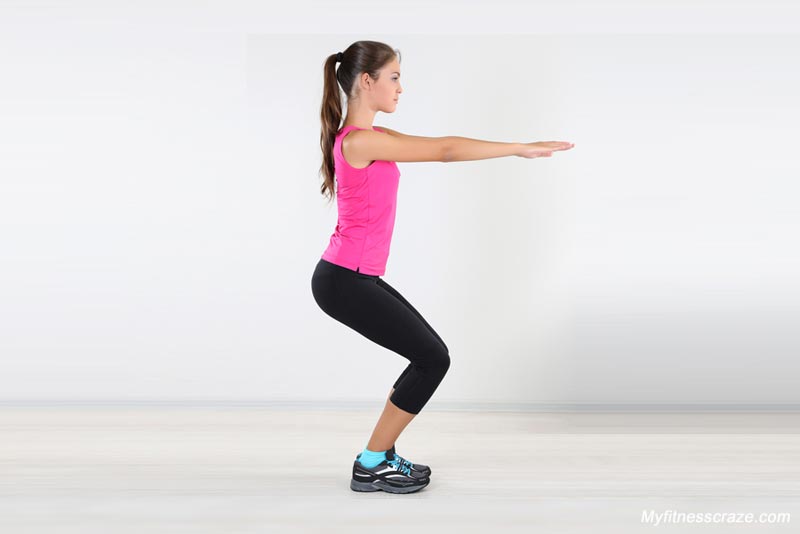
Chair Pose builds strength in the thighs, hips, and calves, directly supporting the knee joint. It encourages proper knee alignment by focusing on engaging the leg muscles, helping to stabilize the knee and alleviate pressure, especially useful for those with knee pain or weakness.
How To Do It:
- Begin in a standing position with your feet hip-width apart and your arms by your sides.
- Inhale and raise your arms overhead, keeping your palms facing inward.
- As you exhale, bend your knees as if you’re sitting back into a chair, keeping the knees behind your toes.
- Hold the pose for 10–30 seconds, keeping your weight in your heels and ensuring your knees don’t go past your toes.
- Inhale as you rise back up, straightening your legs.
4. Warrior II or Virabhadrasana II:
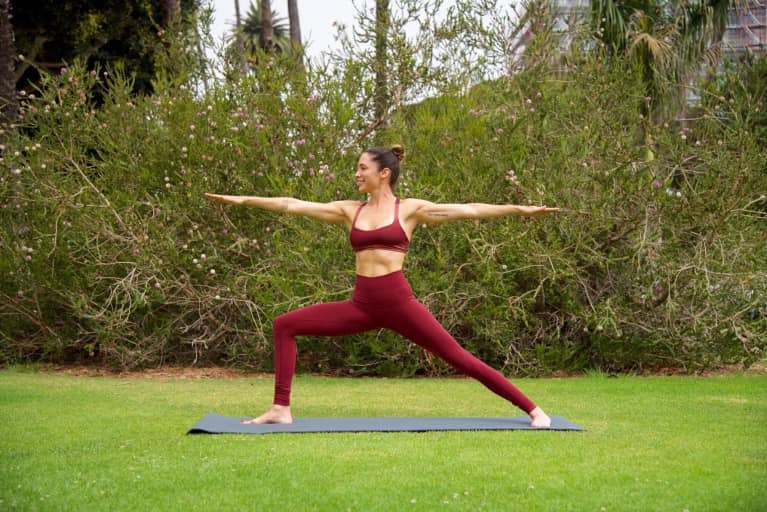
Warrior II strengthens the legs, particularly the quadriceps and hamstrings, while enhancing knee joint stability. This pose improves knee flexibility and alignment, helping to alleviate discomfort caused by prolonged sitting or weak leg muscles, offering support and better posture for the knees.
How To Do It:
- Stand with your feet wide apart, about 3–4 feet, and turn your right foot outward about 90 degrees, with your left foot slightly angled.
- Extend your arms out to the sides at shoulder height, with your palms facing down.
- Bend your right knee, aligning it with your right ankle. Keep your left leg straight and engage your thighs.
- Hold the pose for 20–30 seconds, then slowly straighten your right leg and repeat on the other side.
5. Bridge Pose or Setu Bandhasana:
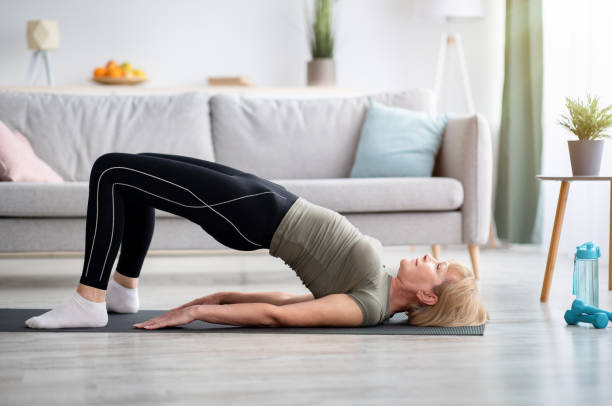
Bridge Pose strengthens the glutes and hamstrings, which support knee function and reduce knee pain. By gently opening the hips and lower back, this pose helps align the pelvis, relieving tension and offering a deep stretch without putting unnecessary strain on the knees.
How To Do It:
- Lie on your back with your knees bent and feet flat on the floor, hip-width apart.
- Place your arms by your sides with your palms facing down.
- On an inhale, press your feet into the floor and lift your hips toward the ceiling, forming a straight line from your shoulders to your knees.
- Hold the pose for 20–30 seconds, then lower your hips slowly as you exhale.
6. Cat-Cow Pose or Marjaryasana-Bitilasana:
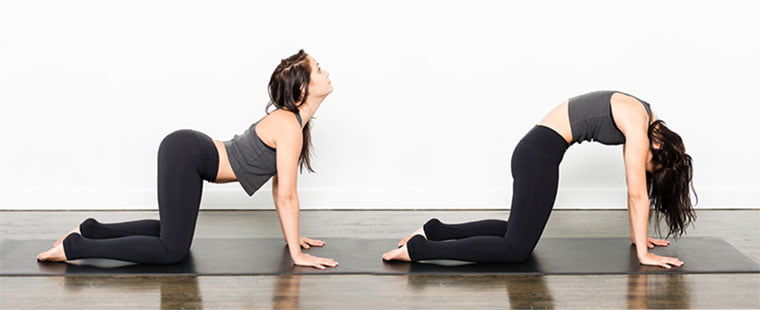
The Cat-Cow Pose gently mobilizes the spine while releasing tension in the lower back and knees. By moving through these two postures, it promotes flexibility in the entire body and encourages a mindful connection between breath and movement, helping to reduce knee discomfort and stiffness.
How To Do It:
- Start on all fours with your wrists directly beneath your shoulders and knees beneath your hips.
- On an inhale, drop your belly toward the floor, lift your chest, and gaze upward (Cow Pose).
- On an exhale, round your back, tuck your chin to your chest, and draw your navel toward your spine (Cat Pose).
- Continue flowing between these two poses for 5–10 rounds, focusing on deep breathing.
7. Child’s Pose or Balasana:
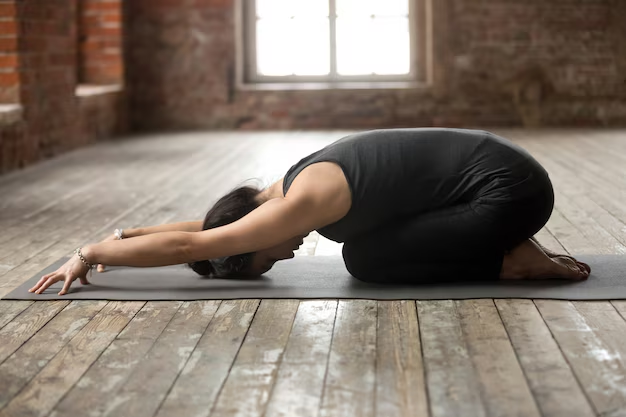
How To Do It:
- Begin in a kneeling position, with your knees spread wide apart and your big toes touching.
- Slowly lower your torso toward the floor, reaching your arms forward and resting your forehead on the mat.
- Breathe deeply and relax in this position for 1–3 minutes, allowing the knees to release tension and the body to rest.
Conclusion:
Gentle yoga offers an effective, low-impact way to manage knee pain and increase mobility. By focusing on strengthening the muscles around the knee, improving flexibility, and enhancing circulation, you can reduce discomfort and promote healing. As with any new exercise routine, it’s essential to listen to your body, move slowly, and avoid pushing through pain. If you’re a beginner, these poses are an excellent place to start, but always consult with a healthcare professional if you have severe knee pain or injuries.
FAQ:
Q. Can yoga completely heal knee pain?
A. Yoga can help manage knee pain by strengthening and stretching the muscles around the joint, improving flexibility, and reducing tension. However, it may not cure underlying medical conditions such as arthritis or injury. Always consult a healthcare provider for a complete treatment plan.
Q. How often should I practice yoga for knee pain?
A. Practicing yoga 2–3 times a week can be beneficial for managing knee pain. However, it’s essential to listen to your body and avoid overexertion. For best results, consistency is key, but rest days are just as important to avoid strain.
Q. Can I practice these poses if I have severe knee pain?
A. If you have severe knee pain or an injury, it’s best to consult with a doctor or physical therapist before starting a yoga practice. They can guide you on the appropriate modifications and whether yoga is suitable for your condition.
Q. Should I use props while practicing yoga for knee pain?
A. Props like yoga blocks, blankets, or cushions can provide additional support and cushioning for your knees. For example, using a cushion under your knees during poses like Child’s Pose or Reclining Bound Angle Pose can help reduce pressure on the joints.
Q. Are these poses safe for beginners?
A. Yes, these poses are gentle and beginner-friendly, designed to build strength and flexibility gradually. Always perform the movements slowly, focusing on alignment, and avoid pushing yourself too far. If you feel pain (not just a gentle stretch), stop and modify the pose.

